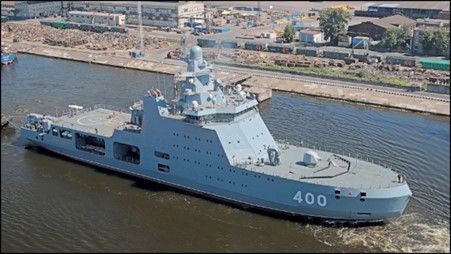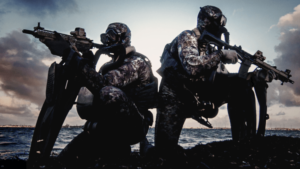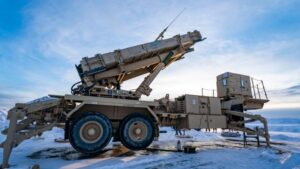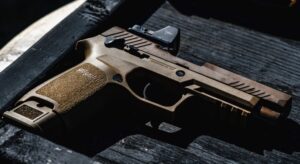The Northern Route
Western sanctions have been ineffective in damaging Russia’s economy. Round after round of sanctions have been imposed on Russia. The sanctions have invariably blown back and resulted in inflation, loss of goods markets, loss of supplies of resources, and loss of Western capital investments. Attempts to cap the price of oil, for example, have failed without exception and have aroused the animosity of Saudi Arabia.
Russia has been shipping oil, liquefied natural gas, and mineral ores to its customers in China, North Korea, and the far east by means of the “northern route.” This is the sea route that stretches along Russia’s arctic coast all the way from Murmansk to Vladivostok and hence to China. Figure 1 illustrates the Northern Sea Route and the traditional route.
Figure 1. The Russian Northern Sea Route and the Traditional Route
The Northern Sea Route is shorter than the traditional route, and Russia owns it. Russia is claiming, under the UN International Law of the Sea, that the Northern Route should be treated as internal Russian waters. The concept is analogous to the Mississippi River. Russia views the Northern Sea Route as Russian as much as the US considers the Mississippi River to be American. This view has not been challenged because no other nation has the capability to challenge it. The Northern Sea Route is inhospitable, and no one has cared enough to develop the capability to do so.
The Icebreaker Gap
Russia has 40 icebreakers and is working to make that 50. 7 of the existing icebreakers are nuclear-powered. The United States has three icebreakers, of which one is being cannibalized for parts to keep the other two running. One of those is deployed to the Arctic, the other to the Antarctic. Russia is now adding armed icebreaker patrol ships to its fleet. These armed icebreakers are highly capable surface combatants of 9,000 tons, able to crash through six feet of ice, each of them armed with a heavy naval gun, Gatling guns, and containerized Kalibr cruise missiles. The Ivan Papanin, the first of this Project 23550 Class, has recently put to sea for its trials. Figures 2, 3 and 4 show the plan and models of the Ivan Papanin.
Figure 2. Project 23550 Combat IcebreakerFigure 3. Project 23550 Combat Icebreaker
Russia has designed its missiles and missile delivery systems to be as modular as possible. Its cruise missiles, for example, can all be delivered from the same containerized launchers and deployed to its non-military icebreakers.
Freedom of Navigation Issues
Far from wanting to close the Northern Sea Route to other countries, Russia wants to encourage Europeans and other countries to use the route. By claiming ownership of the Northern Sea Route as internal Russian waters, Russia will be able to charge pilot fees to any country that wishes to use the route. With its fleet of 40 (soon to be 50) icebreakers, Russia will be able to keep the route open and escort ships of all nations.
Figure 4. Ivan Papanin Project 23550 Combat Icebreaker plan
Combat icebreakers like the Ivan Papanin will ultimately form part of Russia’s coastguard. These ships, armed with anti-ship and land attack Kalibr cruise missiles may soon be armed with S-550 air defense systems. The S-550s are cheaper and somewhat less capable versions of the most advanced generation S-500.
Figure 5. The Icebreaker Gap (Note numbers include civilian vessels.
Figure 5 illustrates the Icebreaker Gap. Note that of the 5 vessels assigned to the US, two are civilian, three are military, and one of those is being stripped for parts to keep the other two running. It is unlikely that NATO can challenge Russia’s dominance in the Northern Sea Route for the foreseeable future.
With its heavily armed icebreakers, Russia will be able to enforce its pilot fee structure and defend what it considers to be its territorial waters. The United States, with 3 unarmed icebreakers, and the UK with zero, will be unable to win freedom of navigation arguments along the northern route. We are currently unable to enforce freedom of navigation against the Houthis in the Red Sea.
Solid arguments have been made to expand our 290-ship navy to a 350-ship navy, yet little progress has been made. Debate is stalling in the middle of arguments about what the force structure needs to look like.
This video discusses some of the challenges the US faces in building out its icebreaker fleet:
The only solution is to build more icebreakers. That cannot be done overnight, so we have to start now. To do so, we need to revive shipbuilding, steel, and other domestic industries. That is another story.
Cameron Curtis
Cameron Curtis has spent thirty years on trade floors as a trader and risk manager. He was on the trade floor when Saddam’s tanks rolled into Kuwait, when the air wars opened over Baghdad and Belgrade, and when the financial crisis swallowed the world. Having written fiction as a child, he is the author of the Breed action thriller series, available on Amazon.
Check out his new Breed thriller, BLOOD SPORT, here:
https://www.amazon.com/dp/B0D6RC5V4V
See all the books in the series here:
Editor’s Note: Be sure to check out all of the Breed thrillers. Recommended by Team SOFREP!
—
Disclaimer: SOFREP utilizes AI for image generation and article research. Occasionally, it’s like handing a chimpanzee the keys to your liquor cabinet. It’s not always perfect and if a mistake is made, we own up to it full stop. In a world where information comes at us in tidal waves, it is an important tool that helps us sift through the brass for live rounds.



